Collection of Live Electronics
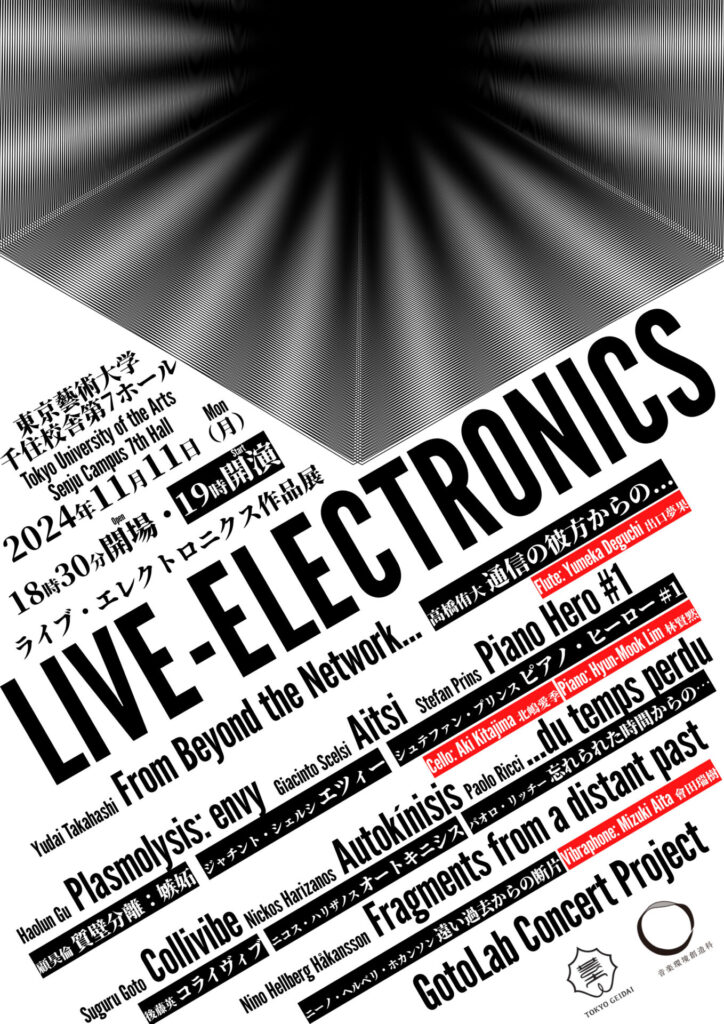
Collection of Live Electronics
2024 November 11th (Mon)
Time: 18:30 (Open), 19:00 (Start)
Location: Tokyo University of the Arts, Senju Campus, 7th Hall (Senju 1-25-1, Adachi, Tokyo)
The composers who experimented various electronic music from Musique Concrète, Elektronische Musik, to computer music, also tried various experiment about mixing electronic sounds and musical acoustic instruments. They also tried to mix instruments while controlling electronic sounds in real time. the experiment of “live electronics” has been continuing until now.
This time, we programmed this concert with mainly new piece of the contemporary composers, while observing the history of the live electronics. We believe observing how the thoughts of the past composers on live electronics are evolving to the contemporary music will be meaningful trip. We will also have Mizuki Aita (Vibraphone) as a guest performer. Mr. Aita will be present the piece for Vibraphone and computer, also several solo Vibraphone pieces. We hope you enjoy the world of the live electronics.
― Hyun-Mook Lim(Tokyo University of the Arts, Department of Creativity of Music and Sound, Doctoral course)
Program
Yudai Takahashi – From Beyond the Communication… (2024) *F
Haolun Gu – Plasmolysis: envy (2024) *C *P
Giacinto Scelsi – Aitsi (1974) *P
Stefan Prins – Piano Hero #1 (2011) *P
Suguru Goto – Collivibe (2024) *V
Paolo Ricci – …du temps perdu (2021) *V
Nino Hellberg Håkansson – Fragments from a distant past (2021) *V
Nickos Harizanos – Autokínisis (2021) *V
*F: Flute: Yumeka Deguchi
*C: Cello: Aki Kitajima
*P: Piano, Keyboard:Hyun-Mook Lim
*V: Vibraphone:Mizuki Aita
Program Notes
高橋侑大:通信の彼方からの...
Yudai Takahashi - From Beyond the Communication...
The theme of this work is “death” metaphorically conveyed through the medium of cell phones. For example, there is a scene in a movie in which a phone call is suddenly cut off and the person on the other end of the line is found to be dead. In addition, when a call is made to an unused telephone number, the other party’s cell phone may emit an inorganic voiceover message saying, “The telephone number you have dialed is not in use at this time. It is possible that the caller has changed the phone number, but it is also highly possible that the caller is no longer using the phone because he or she has passed away, which is another situation in which someone’s death is implied to us through the phone. In this way, it seems to me that there can be several metaphors or allusions to death through the telephone. I thought of this from my own trivial experience as a scared child, but given the prevalence of telephones, it is possible that anyone can experience this. A telephone is an inorganic object, and the voice of the message that is broadcast is a faint voice, which can cause anxiety when there is no response from the other party. The work attempts to depict the sense of anxiety about someone’s death implied by the medium of the telephone, which is uncertain in the sense that we do not know what is going on on the other side of communication, through the sound pattern of a flute and the sounds of electronics added to it, and the composition is such that the voice from the cell phone is intertwined with it. The composition is such that the sound from a cell phone is intertwined with it. I am thinking that one day my phone number will no longer be used. Translated with DeepL.com (free version)
顧昊倫:質壁分離:嫉妬
Haolun Gu - Plasmolysis: envy
Shuntaro Tanikawa considers envy to be one of the five fundamental human emotions. He once dedicated a love song to an imaginary “YOU”—a figure who exists only in a completely unfamiliar, virtual world. Humans are creatures driven by possessiveness, desiring even in their final moments. Also in this composition, directed toward a “SOMEONE” who never appears in the concert hall, we explore deep emotions interwoven with imagined scenarios through the resonance of sound. As the music permeates and connects, it expresses a longing to break free from the obsessions of envy.
ジャチント・シェルシ:エツィー
Giacinto Scelsi - Aitsi
Giacinto Scelsi became interested in microtones and their sustained sounds in the late 1950s, and since then he has not written any more piano works. “Aitsi” (the mysterious title is probably derived from the Greek word ‘aitia,’ meaning ‘cause,’ but the exact origin of the word is not known for certain) is the only piano work by Scelsi in the latter half of his career (with the exception of his other work, ‘Un adieu’). In this piece, the electronic distortion of the chords by live electronics gradually purifies the sound of the piano into a natural sound, and is composed as a pattern of 43 sustained chords that gradually fade away. These sustained changes in the piano tone (accompanied by electronic means) remind subtle changes in tone that Scelsi showed in his later works. The persistent changes in piano tone (accompanied by electronic means) also remind us Scelsi’s interest in the subtle changes in timbre that he has expressed in his later works.
・Hyun-Mook Lim
シュテファン・プリンス:ピアノ・ヒーロー#1
Stefan Prins - Piano Hero #1
This piece is the first in a series of four “Piano Hero” pieces, which are designed to immerse the audience in the work. The keyboard player and the “virtual pianist” projected on the screen, and the audience is immersed in the situation as if the keyboard player and the “pianist” on the screen were playing a duet on a real stage. Or, as in a movie, the audience could be immersed exclusively in the situation on the screen. There is a sudden interruption of this immersion midway through the piece, followed by another moment of immersion, but the viewer will have a different impression of the immersion when he or she re-enters the scene. To quote J. Blais and J. Ippolito: “If something startles the player out of immersion and into reality, out of illusion and into insight, then we have a moment of arrest remarkably similar to the instant when an antibody latches onto a virus. Suddenly, a shift in the system (immunological or ideological) occurs, and nothing remains the same.”
・Hyun-Mook Lim
後藤英:コライヴィブ
Suguru Goto - Collivibe
Collivibe for Vibraphone and Live Electronics is a unique musical work that, as its name suggests, combines the elements of “Collision” and “Vibraphone.” The “collision” embodied in the title represents the sonic interaction and resonance that occurs between the acoustic sound of the vibraphone and the electronically processed sound in real time. In recent years, numerous works in this series have been created, blending the traditional vibraphone with live electronics, exploring new approaches by merging conventional instruments with modern technology. Unlike typical conceptual works, this piece focuses on fully drawing out the acoustic properties of the instrument and the possibilities of electronic processing. The warm tone of the vibraphone, its subtle vibrations, and its characteristic rhythmic qualities as a percussion instrument collide and resonate with the instantaneous transformations made by digital processing, creating an unpredictable and evolving soundscape. In this work, the process of each vibraphone strike being transformed in real time and expanding into a complex soundscape within the performance space plays a crucial role. This process encourages the audience to listen intently to each moment of sonic change, allowing them to experience a dynamic unfolding of sound as if the music is continually being reborn in front of their eyes. The series not only focuses on technical experimentation but also emphasizes the interaction between the unique qualities of the instrument and the performer’s physical movements, deeply exploring musical expression. By fusing the vibraphone with live electronics, the work expands the possibilities of musical creation, transcending the boundaries between acoustic and digital sound, and presenting a new form of musical expression.
パオロ・リッチー:忘れられた時間からの…
Paolo Ricci - ...du temps perdu
“…the scent of times gone by,
that never returns,
that is lost”
The inspiration for my composition “…du temps perdu” (wasted time) was born from these poetic verses, found by chance on the web. From the beginning, a very calm, reflective sound material with a vague French flavour (Ravel?) is introduced. This initial material is re-proposed, slightly varied in its timbral parameters, at other moments of the score, interspersed with other warmer and more virtuosic elements, which create the opportunity to explore the various techniques of this fascinating instrument. The ending still reserves us a moment of calm and serenity, almost a rediscovery of inner peace.
ニーノ・ヘルベリ・ホカンソン:遠い過去からの断片
Nino Hellberg Håkansson - Fragments from a distant past
I have always lived in an urban city environment, and as such have always felt a bit of a disconnect to the folk music of Sweden. I’ve mostly been exposed to it in the form of lullabies and choral arrangements (of varying qualities). One aspect that i´ve always thought was very interesting though is that some folk tunes tend to blend together in my memory. As my musical awareness grew however, so did the realisation that these melodies are actually very similar to each other. As such I thought it would be fun to collect a few of these very similar tunes, and illustrate this faulty memory of mine in a composition. Folk tunes: Vem kan segla förutan vind (that that I recently found out is Finnish!), Om sommaren sköna, Uti vår hage, Till Österland vill jag fara, Vårvindar friska, Ack Värmeland du sköna!
ニコス・ハリザノス:オートキニシス
Nickos Harizanos - Autokínisis
The title of the work “Autokinisis” based on a greek word which is a combination of two words, Auto and Kinisis. The first one, “Auto” is the one known in english, means “self”. The second one, “Kinisis” means moving, action. So the meaning of the title is self moving, moving itself alone. The character of the work is like that, there are rhythmic patterns which are referred to this idea. The second slow part of the work has a quite mysterious character and harmonies. A third fast and short part continues, a reference to the first one. And finally the work ends with some words by Heracletus, the character of the man leads him to his actions (and move, “Kinisis”.
Profile(Composer)
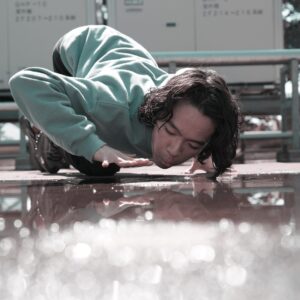
高橋侑大/Yudai Takahashi
Born in 2004 in Aichi Prefecture, Japan. He has studied composition under Hiromi Ueno and Suguru Goto. Currently, he is a second-year student of the Department of Musical Creation and Environment at Tokyo University of the Arts.
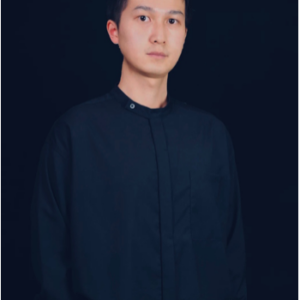
顧 昊倫/Haolun Gu
A native of Soochow, China. GU is a composer and pianist, received his Bachelor’s degree from Shanghai Conservatory of Music in 2017, and completed his Master degree in Tokyo University of the Arts in 2020. Now he is a PhD student in Tokyo University of the Arts. He has been awarded scholarship by the Japanese Ministry of Education, Culture, Sports, Science and Technology (MEXT) from 2021. He received the 1st Prize at the 3rd Shanghai International Electronic Music Competition (IEMC) in Shanghai. His works have been commissioned and selected by The Centennial of the Electronic Musical Instruments at National Museum of Nature and Science (Tokyo), Future-Tradition New Media Masterclass Series (Shanghai), EMW (Shanghai), NYCEMF (New York), ICMC (Santiago de Chile) as well as Ensemble H[akka] 20th anniversary concert “Hiroshima and music” (Hiroshima), and got commission from the 7th Ryokoku Art Festival. He has studied composition with Yi Qin, Mingwu Yin, Qiangbin Chen, Eric Arnal, Tatsuhiko Nishioka, and Suguru Goto.

ジャチント・シェルシ/Giacinto Scelsi
Giacinto Francesco Maria Scelsi was an Italian composer who also wrote surrealist poetry in French. He is best known for having composed music based around only one pitch, altered in all manners through microtonal oscillations, harmonic allusions, and changes in timbre and dynamics, as paradigmatically exemplified in his Quattro pezzi su una nota sola (“Four Pieces on a single note”, 1959). This composition remains his most famous work and one of the few performed to significant recognition during his lifetime. His musical output, which encompassed all Western classical genres except scenic music, remained largely undiscovered even within contemporary musical circles during most of his life. Today, some of his music has gained popularity in certain postmodern composition circles, with pieces like his “Anahit” and his String Quartets rising to increased prominence.
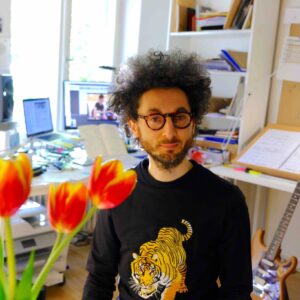
シュテファン・プリンス/Stefan Prins
After graduating as an engineer, Stefan Prins (Belgium, 1979) started to study fulltime piano and composition at the Royal Flemish Conservatory in Antwerp, Belgium, where he obtained his Masters degree in Composition with Luc Van Hove magna cum laude. Concurrently, he studied “Technology in Music” at the Royal Conservatory of Brussels with Peter Swinnen, “Sonology” at the Royal Conservatory of The Hague (2004-2005; The Netherlands), “Philosophy of Culture” and “Philosophy of Technology” at the University of Antwerp. In May 2017 Stefan obtained a PhD in composition at Harvard University (Cambridge, Massachusetts) under the guidance of Chaya Czernowin.
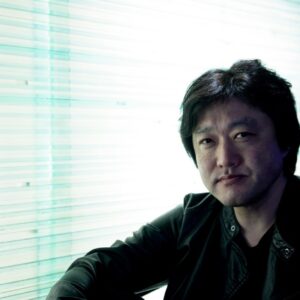
後藤 英/Suguru Goto
Suguru Goto is a composer/performer, an inventor and a multimedia artist and he is considered one of the most innovative and the mouthpiece of a new generation of Japanese artists. He is highly connected to technical experimentation in the artistic field and to the extension of the existing potentialities in the relation man-machine. In his works the new technologies mix up in interactive installations and experimental performances; he is the one who invented the so-called virtual music instruments, able to create an interface for the communication between human movements and the computer, where sound and video image are controlled by virtual music instruments in real-time through computers. Lately, he has been creating the robots, which perform acoustic instruments, and he is in process of constructing a robot orchestra. He has been internationally active and has received numerous prizes and fellowships, such as Koussevitzky Prize, BSO fellowships, the first prize at the Marzena, Berliner Kompositionaufträge, a prize by the IMC International Rostrum of Composers in UNESCO, Paris, DIRECAM, French Cultural Minister, Music Theater Award 2008 in Berlin, “OFQJ-dance and new technology prize” at Bains Numérique #4, International Festival of digital art of Enghein-Les-Bains, in France, in 2009 and so on. His works have been performed in major festivals, such as Resonaces/IRCAM, Sonar, ICC, Haus der Kultures der Welt, ISEA, NIME, AV Festival, STRP Festival 2009, Venice Biennale, etc.

パオロ・リッチー /Paolo Ricci
Born in 1949 at Longiano (FC), Ricci studied at the Pesaro Conservatory with Piero Luigi Zangelmi and with Franco Donatoni at the Accademia Musicale Pescarese (Pescara).
He received his first important affirmation in Rome in 1984 by winning the prestigious “Valentino Bucchi” Prize with the chamber piece “Sentieri nel canneto”, a prize that he won again in 1988 for his string quartet “Recuperi dal silenzio”.
During the time that his works were beginning to be performed in various important musical events and festivals (Unione Musicale of Torino, Gaudeamus Musicweek of Amsterdam, Cantiere Internazionale d’Arte of Montepulciano, Aspekte Neue Musik of Salisburgo, Boston University, Stagioni Sinfoniche RAI of Milano and Torino , Presencia de Italia en Mexico, Festival Risuonanze of Udine ecc.), acknowledgements in numerous international competitions were growing: Poliphonic Composition Contest “Guido d’Arezzo” (1986 – 1992), “G.B.Viotti” (1984), the Leuven Concours Européen Musique et Poésie {B} (1986), the “Musica Antiqua Europae Orientalis” at Bydgosch {PL} (1986) , the Contest “G.Savagnone” of Rome (1987).
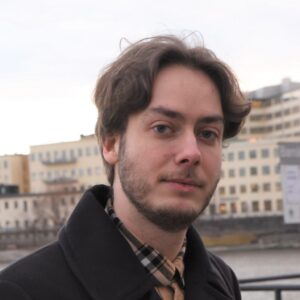
ニーノ・ヘルベリ・ホカンソン/Nino Hellberg Håkansson
Nino Hellberg Håkansson is a methodical composer. In a bachelor’s thesis, he has investigated three of his compositions, created with three different compositional methods. The first is to work out the shape of the work first and then the detailed material following this structure. The other is to directly work on small musical fragments that are later assembled into a larger form. The third way is a combination of the first two, where you work with musical fragments at the same time as having a large form that they should fit into.
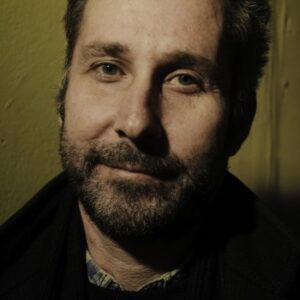
ニコス・ハリザノス /Nickos Harizanos
NICKOS HARIZANOS was born in Athens. He studied Composition, Orchestration, Harmony and Counterpoint in Athens under the supervision of the Professors Christos Lambrianidis and Spyros Klapsis from 1992 to 1999. He then continued his studies in Composition at Manchester University (2000-2001) with Professor John Casken and Professor Geoffrey Poole, graduating with a research Master’s degree (MMus) in Composition. His music has been performed in the U.S.A., Australia, Canada, China, U.K., Russia, Japan, Korea, Mexico, Argentina, Colombia, South Africa, Morroco, Germany, Luxembourg, Italy, France, Ireland, Spain, Portugal, Norway, Poland, The Netherlands, Belgium, Switzerland, Latvia, Ukraine, Croatia, Slovakia, Bulgaria, Czech Republic, Albania, Lithuania, Hungary, Romania, Serbia, Cyprus, Greece.
https://www.nickosharizanos.com/
プロフィール(演奏者)
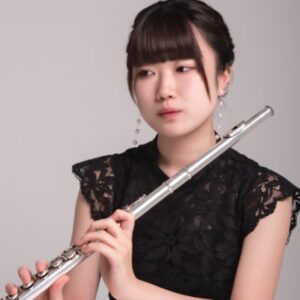
出口夢果/Yumeka Deguchi
Currently a second-year student at the Faculty of Music, Tokyo University of the Arts.
Attended the master class of Mr. Denis Briakov at PMF2022.
Received an overseas scholarship from the university to participate in the ASAP (Arts Study Applied Program) project “Improvisation: Conservatoire de Paris vs. Tokyo University of the Arts”.
She has studied flute under Shiori Fujie, Akira Kawaguchi, Hiromitsu Abe, and Hiroaki Kanda, and is currently studying with Eisuke Takezawa.

林 賢黙/Hyun-Mook Lim
Hyun-Mook Lim is a pianist specializing in new modern musics in our age.
She has worked with many composers of our age, and has performed their works. also she sometimes has been getting a dedication from them.
Her performances show the interests in the relationship between the sound and human being, especially about performer’s responsibility or social position when performing works from the past in this age. her performances show the interests in the various relationship for example between the sound and the society, the sound and the body, the sound and the gender, etc. but that doesn’t mean just simply re-performance, but rather based on the creative approaches as the modern performer.
She is currently residing in Tokyo, Japan, and performing both in Japan and Korea. she is recently concentrating on expanding performance experience through performing music for Piano and electronics, and restoring outdated electronic works with modern technologies.
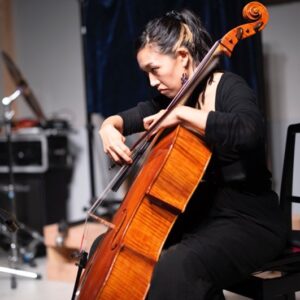
北嶋愛季/Aki Kitajima
Cellist, nursery school teacher and performance coach. 2013/14 Ensemble Modern Academy student. Currently she is a student at the Open University of Japan (Psychology and Education). She regularly gives solo concerts with baroque and modern two cellos in Tokyo, Frankfurt and Munich. She has appeared at numerous domestic and international contemporary music festivals and concerts. She is a member of the improvisation duo OKA-ARUKI, the trio Minori, which performs modern and contemporary works, and ciel, which holds concerts for parents and children.
©Shu Nakagawa

會田瑞樹/Mizuki Aita
Mizuki Aita was born in Sendai, Miyagi Prefecture, in 1988. He started learning the violin at a young age, and began playing percussion instruments when he was twelve years old. He studied the basics of percussion with Yasushi Sasaki, Ritsuko Hoshi, Makoto Aruga and Takafumi Fujimoto. Since winning second prize in the 9th Japan Society for Contemporary Music Competition (Kyogaku IX) he has premiered more than fifty compositions by numerous composers. These premieres, born out of close contact and mutual trust between the composer and performer, and further performances of the same works, have been widely acclaimed. In 2011 Mizuki made his Suntory Hall debut in a concert which he organized himself, entitled Rainbow 21 Suntory Hall Concert “The Sound of Percussion Music – its Creativity and Inheritance”, and in the same year Michiko Takahashi gave him the vibraphone she had used for many years. This deepened Mizuki’s interest in the unique appeal of the instrument, and he gave the first of his annual solo recitals the following year. In 2012 he organized a a concert at the Tokyo Bunka Kaikan, entitled “The World of Yoshio Hachimura” as a tribute to the composer who died at the young age of forty seven. The concert was a much talked about event. In 2014, his appearance on the NHK-FM program Recital Nova was so successful that his percussion recital a month later was sold out. Mizuki specialized in percussion in the Department of Virtuoso at the Musashino Academia Musicae. He completed post-graduate studies at the same institution, thus completing the virtuoso course. He studied percussion and the marimba with Sumire Yoshihara and Momoko Kamiya.